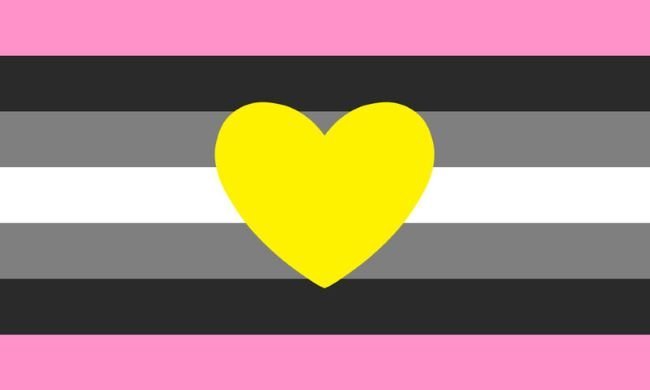More than friends, less than lovers: Diving into queerplatonic relationships

One person experiences a number of relationships in their lifetime. These relationships also include familial, professional, romantic, and friendly ones. However, when it comes to romantic relationships, there are several characteristics to fit in. Considering the boundaries of acceptable behavior in friendships and love relationships. So, you might expect certain behaviors from friends and romantic partners. Queerplatonic relationships obscure those boundaries. Have you ever had a level of closeness that seems deeper than friendship but isn’t quite romantic with someone? In such a case, you could have had a queerplatonic relationship. But, what exactly is it?

What are queerplatonic relationships?
What exactly is it?
The aromantic and asexual community coined the phrase “queerplatonic relationship.”
It is a close, non-romantic relationship that goes beyond what most people would classify as friendship. At the same time, it entails the emotional commitment and prioritizing typical of romantic relationships. In addition, anyone may be in a queerplatonic relationship, regardless of gender or sexual orientation. Partnerships that are queerplatonic are also known as quasiplatonic relationships, quirky relationships, q-platonic relationships, or simply QPRs.

QPRs are basically committed, intimate, non-romantic partnerships. Also described as a balanced, centered, loving relationship. An arrangement for a polyamorous partnership might include QPR.
Aside from that, QPRs provide an alternative to heteronormative relationships and the belief that everyone seeks romantic or sexual relationships. It bends, changes, and dismantles how most cultures view monogamous, committed partnerships.
Also, it blurs the distinction between romantic and non-romantic relationships. Even if it does not fit the definition of a romantic relationship, it frequently goes beyond what is deemed socially acceptable for a platonic relationship.
What does it look like?
QPR is not romantic yet possesses the characteristics of a romantic connection. It doesn’t have to be romantic to go on dates, kiss, hold hands, sleep together, live together, and get married.
Also, it can be based on sensual, sexual, platonic, or pretty much any attraction that isn’t romantic. It may be based on queerplatonic attraction or quasi-romantic attraction, where it’s neither romantic nor platonic but a mix.

Furthermore, QPRs disrupt heteronormativity by establishing a dynamic between individuals based on intense emotional intimacy and closeness. Except without the conventional romantic or sexual components of a heteronormative relationship.
Additionally, QPR is less committed than a conventional romantic or sexual connection and more committed than a conventional friendship. It calls for a deeper level of mutual trust, emotional intimacy, and loyalty than is often seen in friendships or romantic relationships.
The fact that the people involved in QPRs set the rules is what matters most. Because everyone has unique needs that are addressed by unique persons and partners, every relationship looks distinct.
What are squish, plush, and squash?
Having a crush is similar to having a squish, plush, or squash, but exclusively in reference to a QPR. The words described someone with whom one may share an intimate bond that wasn’t of the conventional romantic or personal variety. In essence, it’s a desire to develop a queerplatonic relationship with a specific individual.

Notably, these terms mean desires to have a queerplatonic relationship with someone. Squish, however, often has a strong emotional connection. Furthermore, the aromantic and asexual communities also created the terminologies. To highlight that it’s not always true that lust or romance complements love and infatuation. It also expresses their non-romantic and non-sexual emotions of attraction.
What do you call each other?
The terms boyfriend/girlfriend, partner, or even significant person do not match QPRs since they are used by the asexual and/or aromantic. Because of this, the terminology had to be different, and come up with new endearments. As a result, queerplatonic lovers occasionally call one another “zucchinis”. It serves as a substitute for the terms “friends,” which downplay closeness, and “partners,” which imply a romantic or sexual connection.
Intimate, non-sexual relationships can also be described using this non-romantic word. Additionally, the phrase was first used as a joke term in the 2000s by the aromantic and asexual communities. It soon became a term for a queerplatonic partner.

It also aims to draw attention to the fact that no suitable phrases exist to describe meaningful, personal relationships and forms of love that are neither romantic nor sexual. The birth of the zucchini reflects dissatisfaction with relationship expectations set by society. Also, the idea is that most people want romantic and sexual relationships, and most importantly, the formation of personal attachments.
How do we support QPRs?
Realistically, you should abandon your expectations. Quite simply, whatever you think or feel a partnership should be is your opinion, not the other person’s. To support those who are in queerplatonic relationships, start your research and learn about QPRs. Additionally, get to know the individuals in QPRs, ask the right questions, and get information directly from them.

It’s vital to remember that expectations in queerplatonic relationships differ from those in heteronormative relationships in general. To make their relationship work for them, they disregard the rules and social standards.
The most vital point is to refrain from passing judgment, pay attention, and lend a hand when needed. If you are not asked for advice, don’t provide any as well. Consider your engagement and involvement in problems and why they matter to you.
Just a fun fact, every third Saturday of July is Queerplatonic Relationship Day. It is a day for QPR visibility and celebration.
The individuals engaged in the relationship decide what is and isn’t included in their particular partnership. Instead of automatically adhering to societal norms like sexual activity or romantic commitments, the persons involved in that relationship purposefully determine the parameters of what their commitment includes. In other words, it’s just them and their partners setting the rules.











